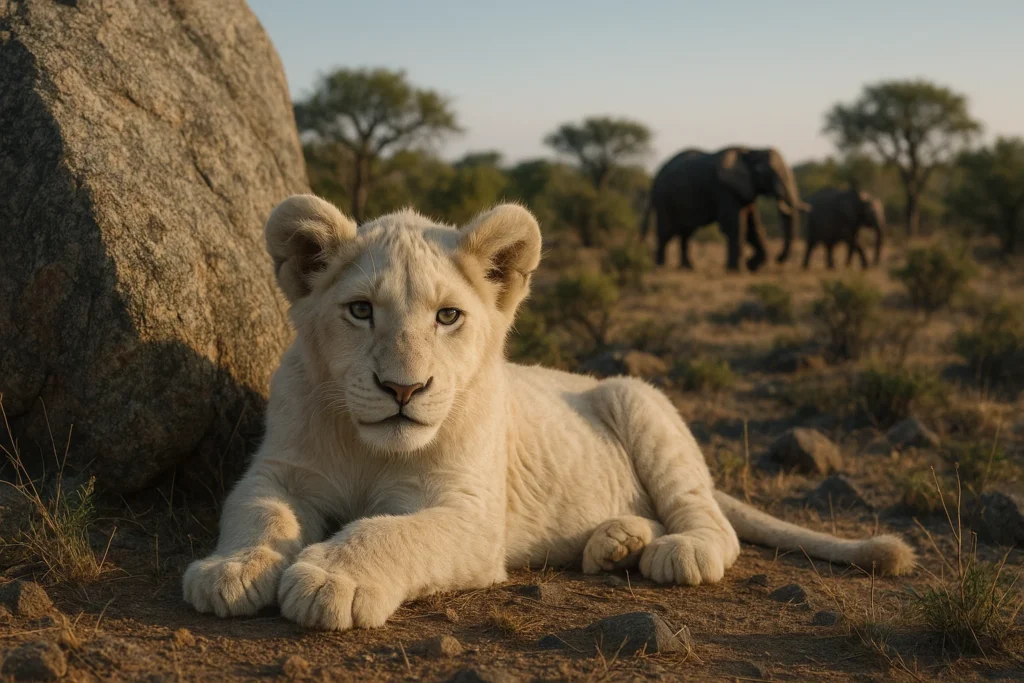Queen Elizabeth National Park, nestled in the western rift valley of Uganda, is a living mosaic of savannas, wetlands, crater lakes, and tropical forests. But beyond its striking landscapes lies a treasure trove of wildlife, unlike any other in East Africa. From massive hippo pods wallowing in the Kazinga Channel to lions lounging high in fig trees, this park is defined by its biodiversity and its surprises. This article explores the park’s most unique animal inhabitants, their habitats, and the conservation efforts that protect them.
A biodiversity hotspot in the heart of Uganda
Spanning nearly 2,000 square kilometers, Queen Elizabeth National Park (QENP) is Uganda’s most visited safari destination—and for good reason. It hosts over 95 mammal species and more than 600 species of birds, making it one of the most diverse ecosystems in Africa. Its varied terrain—ranging from open savanna to lush forest—supports an extraordinary array of fauna, many of which have adapted in unique ways to the park’s environmental dynamics.
The Kazinga Channel: kingdom of hippos and crocs
One of QENP’s defining features is the Kazinga Channel, a 32-kilometer natural waterway connecting Lake George to Lake Edward. This slow-moving river is famous for having one of the highest densities of hippos in the world. On any given boat safari, you’re likely to see hundreds of these semi-aquatic giants grunting and splashing in the shallows, alongside massive Nile crocodiles sunning themselves on the banks.
Beyond hippos and crocs, the channel attracts herds of elephants, buffaloes, and antelope, all drawn by the abundant water. Birdlife is equally rich, with African fish eagles, pied kingfishers, saddle-billed storks, and pink-backed pelicans frequently sighted.
The Ishasha tree-climbing lions: a rare phenomenon
In the park’s remote southern sector of Ishasha, visitors encounter a wildlife spectacle found in only one other place on Earth (Lake Manyara, Tanzania): tree-climbing lions. Unlike typical lion behavior, the lions of Ishasha climb and rest on the thick, horizontal branches of sycamore fig and acacia trees, often lazing in the midday heat.
Why do these lions climb trees?
Researchers propose several theories:
- Heat regulation: Tree branches offer cooler resting spots during the hottest part of the day.
- Insect avoidance: Being elevated protects them from biting insects like tsetse flies.
- Better vantage points: From the trees, lions can observe prey like Uganda kobs roaming the grasslands.
These lions are not only a biological curiosity—they are a symbol of the park’s adaptability. Their distinct behavior, along with their often dark-maned appearance, makes them a highlight of any safari.
Other iconic species of Queen Elizabeth
Beyond lions and hippos, the park teems with other remarkable wildlife:
- Elephants and buffaloes roam the savannas in large herds.
- Leopards lurk in the thickets, especially around Mweya.
- Uganda kobs, a graceful antelope species, dominate the grasslands and serve as primary prey for lions.
- Topis, bushbucks, and waterbucks add variety to the herbivore population.
- In the Kyambura Gorge, visitors may trek to see chimpanzees in their natural forested habitat.
Conservation significance and challenges
Queen Elizabeth National Park is more than a tourist destination—it’s a crucial conservation area. In 2006, it was designated a Lion Conservation Unit by the IUCN, recognizing its role in preserving East Africa’s lion populations. With pressures from human-wildlife conflict, habitat encroachment, and poaching, conservation efforts are more important than ever.
Organizations like the Uganda Wildlife Authority and international partners are working to combat wildlife trafficking, monitor lion populations, and protect key habitats. Notably, anti-poaching patrols and community conservation programs have helped reduce illegal activity, especially near the park’s porous borders.
Ecotourism and community engagement
Tourism plays a vital role in supporting conservation in QENP. Park fees fund ranger salaries, infrastructure, and research. But beyond economics, tourism helps build community engagement. Many local communities now benefit from jobs, guide training, and revenue-sharing programs that incentivize the protection of wildlife.
Cultural tourism is also growing. Visitors can explore traditional villages, learn about the customs of the Banyabindi and Bakonzo people, and see firsthand how conservation and culture intertwine.
Best time to visit
The best wildlife sightings occur during the dry seasons (June to September and December to February), when animals gather at water sources and vegetation is less dense. This is also when the tree-climbing lions are most reliably seen in Ishasha.
Conclusion
Queen Elizabeth National Park offers more than just a classic safari—it delivers moments of true wonder. Whether it’s the surreal sight of lions draped over fig trees or the rhythmic snorts of hippos in the Kazinga Channel, this park invites travelers into one of Africa’s most dynamic and surprising ecosystems. It stands as a model for how wildlife, communities, and conservation can coexist.
For more stories about Africa’s rarest animal behaviors and unforgettable safari destinations, continue exploring our blog.
FAQs
To escape heat and biting insects, and possibly to scout prey from elevated positions.
Estimates suggest thousands, making it one of the most hippo-populated areas in Africa.
Yes, in Kyambura Gorge visitors can join guided treks to observe chimpanzees in the wild.
Yes, the park is well-managed and considered safe for tourists with guided tours and park regulations.
Visit the Ishasha sector with a knowledgeable guide during the dry season for the best chance of sightings.
Absolutely—Kazinga Channel boat cruises are among the most popular activities.
Over 600 bird species live here, including kingfishers, herons, eagles, flamingos, and pelicans.
Yes, through employment, revenue sharing, and cultural tourism initiatives.
It lies near the border with DRC’s Virunga National Park, and conservation efforts often involve cross-border collaboration.






